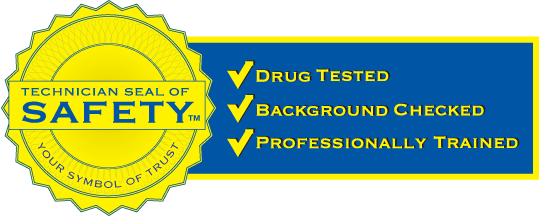Top 10 Furnace Maintenance Tips
It may not always seem like it, but temperatures in Stillwater, OK, can get below freezing during the winter months. That’s why having a reliable furnace in your home is essential, even if it goes unused for many months at a time.
When the moment comes for your annual furnace inspection, or you need heating repair, Sitton Mechanical is only one phone call away. As your #1 heating and cooling contractor in Stillwater, OK, our HVAC technicians are experts in furnace tune-ups and will be honest and upfront with you when necessary repairs.
Before you call in the experts, though, there are some quick and simple things homeowners can do regularly to ensure their furnace is performing at its best. Check out our top ten furnace maintenance tips below!
1. Keep Vents Unobstructed
There is a popular myth out there that closing specific vents or doors in your home will help reduce your energy usage and, therefore, your monthly bills. However, this action will actually cause your furnace to run more frequently as it tries to balance out varying temperatures in your Stillwater, OK home.
It’s best to keep all vents open and ensure that furniture or other objects aren’t blocking them. Any time you rearrange the furniture in your home, even during the summertime, check that your new setup isn’t blocking any air vents.
2. Change Your Air Filter
At the beginning or end of each month, take a moment to pull out your furnace’s air filter and see if it needs changing. It’s usually a pretty straightforward process that will only take a minute or two, but it will help keep your home’s indoor air quality high and help your furnace run better. Changing your air filter every three to six months is sufficient for most homes. For houses with pets or allergy sufferers, every month or two works best.
3. Maintain Clearance Around Your Furnace
Most furnaces are tucked away in a corner or closet that end up acting as a storage area. Unfortunately, this is bad news for your furnace. It needs enough space to safely and effectively operate, so maintaining a few feet of clearance in all directions helps it do its job.
If items have accumulated around your furnace over the warmer months when it’s not on, find new storage spots for those objects before firing up your furnace again. It’s also a good idea to check any outdoor vents at the start of the cold season to ensure no debris has blocked their exit points.
4. Check Carbon Monoxide Detectors
This tip is also a part of any furnace inspection, but it’s something you can do easily on your own as well. Any Stillwater, OK, home with a gas furnace must have carbon monoxide detectors outside all sleeping areas. The reason for this is if your furnace’s heat exchanger malfunctions, it could release carbon monoxide into your home rather than venting it outside as it should.
Since carbon monoxide is colorless and odorless, the only way to know it’s inside your house is with a detector. If your carbon monoxide detector isn’t working, you and your family may be exposed to this deadly gas without any warning.
5. Perform a Thermostat Calibration
It may sound like a complicated job, but as thermostats become more user-friendly and advanced, you can probably calibrate your device without calling in professionals. To do a thermostat calibration, you’ll first want to make sure it needs calibrating in the first place.
To check your thermostat’s accuracy, place an indoor thermometer a few inches away from the thermostat and wait about 20 minutes. If the reading on the thermometer isn’t the same or very close to the thermostat’s reading, it needs calibration.
Calibrating your thermostat involves a few steps. For starters, you’ll want to clean the thermostat (after turning it off) by taking off the cover and removing any built-up dirt and dust. You can use a soft cloth, cotton swab, or compressed air if you have it.
You’ll also want to check that your thermostat is level (this is particularly important for thermostats that use mercury). After placing the cover back on, use a bubble level to see if any adjustments are necessary.
Finally, use whatever built-in calibrator your thermostat has (it may be a lever, screw-on mechanical thermostat, or an option in the settings menu on a digital thermostat) to adjust your thermostat accordingly. Then, wait another 15 or 20 minutes and recheck the indoor thermometer to see if it now matches your thermostat.
If all of this sounds too complicated for you, you don’t have the right tools, or the thermostat calibration didn’t solve your problem of erratic temperatures, don’t fret. You can give Sitton Mechanical a call, and we’ll send out a technician for your heating repairs.
6. Adjust the Control Valve
All gas furnaces will have a control valve that regulates the flow of natural gas into your furnace. To access the control valve, you usually need to remove the main panel on your furnace. Once you find the control valve, check that it is in the “ON” position, and if it isn’t, switch it to “ON.” Sometimes for safety purposes, this valve will automatically shut off without you realizing it. A simple flip of the switch should get the gas moving into your furnace again so you can heat your home correctly.
However, if the control valve continues to turn off automatically, there must be a good reason for it, and you should call an HVAC technician to check things out right away.
7. Check Your Pilot Light
Before another cold season hits Stillwater, OK, it’s helpful to do a physical and visual inspection of your pilot light. First, before turning on your furnace, look at the pilot light and ensure there isn’t anything blocking it, like built-up dirt and debris. Next, turn on your furnace and check that the pilot light is burning blue.
If the flame is a more yellowish color, there’s likely an issue with your gas line, and you should call the experts. Also, if your pilot light simply won’t light or keeps going out, it’s time to switch from DIY options to professional assistance.
8. Check Your Chimney
Whether it’s for a fireplace, wood-burning stove, or other fuel-fired appliance, it’s a good idea to check the chimney in your home every fall to know that nothing has blocked it over the last few months. Chimneys can end up being blocked by bird nests, branches, leaves, or other debris without your knowledge, and this can significantly impact your home’s ventilation and overall airflow.
If you cannot clear the debris from within your home, please do not climb up onto the roof to solve the problem. This work is dangerous and could result in injury. Instead, call certified professionals for help.
9. Oil the Motor
Another simple tip to keep your furnace up and running for years to come is to oil the motor. You’ll want to do this at the start of every season and before turning your furnace on for the winter. Once you remove the outer panel and can access the blower motor, add a few drops of ten-weight non-detergent motor oil. Make sure you only add a few drops since overlubricating the motor will create other issues.
Also, before adding oil to the motor, you may want to check that it’s clean. You can gently remove any dirt or dust accumulated over the last year but be careful not to remove any lubrication.
10. Call an HVAC Technician for a Furnace Tune-Up
In addition to performing the simple maintenance tips above, having an HVAC technician check your furnace annually will help keep it running smoothly from year to year. A qualified Sitton Mechanical technician can give your furnace a thorough inspection and knows what warning signs to look for to prevent or alleviate problems.
A yearly furnace tune-up will save you money in the long run as it keeps necessary repairs at a minimum and helps curb the need for extensive repairs. A certified professional has the knowledge and experience to perform any repairs, and they will know when your furnace is coming to its end and needs replacement.
When the HVAC technician comes to your home, you can share your observations and what maintenance you’ve performed yourself on the furnace already. Having this information will help the technician know what they’re dealing with and save them a fair amount of time. They’ll also be able to check other aspects of your furnace that you may not be aware of to see if any of those components are acting up.
Summing Up
Furnace maintenance is a very difficult DIY job. You can try these few simple tune-up tips to the best of your ability; however, if you want a dependable furnace that lasts longer and performs better, you may need professional assistance. So if you find yourself in over your head or are too hesitant to go it on your own, simply call Sitton Mechanical, and we’ll come to the rescue.




